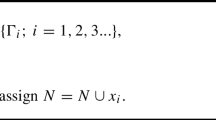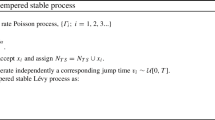Abstract
Fractional Brownian surfaces have frequently been used to model various physical processes and to generate artificial landscapes. We study a closely related process, called two-dimensional fractional Gaussian noise. We devise a method for generating realizations of this process using an approximate conditioning approach, motivated by results from the corresponding one-dimensional process applied in teletraffic modeling.
Similar content being viewed by others
References
K. Dzhaparidze and J. J. van Zanten, A Series Expansion of Fractional Brownian Motion, Centrum voor Wiskunde en Informatica, CWI, report PNA-R0216, June 30, 2002.
J. Feder, Fractals, Plenum Press: New York, 1988.
G. S. Fishman, Monte Carlo—Concepts, Algorithms and Applications, Springer-Verlag Inc: New York, 1996.
I. Norros, P. Mannersalo, and J. L. Wang, “Simulation of fractional brownian motion with conditionalized random midpoint displacement,” Advances in Performance Analysis vol. 2 pp. 77–101, 1999.
G. Schorcht, U. Freund, H. Salzwedel, and H. Keller, “Modeling of terrains for simulation of integrated mobile terrestrial and satellite communications systems,” Proceedings of the IEEE 46th Vehicular Technology Conference VTC'96, Atlanta, GA, April 1996, S. 1288–1292.
Author information
Authors and Affiliations
Rights and permissions
About this article
Cite this article
Penttinen, A., Virtamo, J. Simulation of Two-Dimensional Fractional Gaussian Noise. Methodology and Computing in Applied Probability 6, 99–107 (2004). https://doi.org/10.1023/B:MCAP.0000012417.10460.03
Issue Date:
DOI: https://doi.org/10.1023/B:MCAP.0000012417.10460.03




